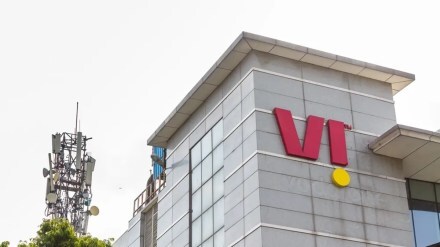The government’s decision to convert Rs 36,950 crore of Vodafone Idea’s spectrum dues into equity, raising its stake to 49%, fits squarely within the telecom reforms package of September 2021 and offers the struggling telecom operator a temporary lifeline. It eases the immediate liquidity pressures as the four-year moratorium on payments ends in September. Earlier, in February 2023, the government had converted Rs 16,133 crore of interest dues into equity and became the company’s largest shareholder. Later a Rs 18,000-crore follow-on public offer diluted the government’s stake to 22.6%. The latest move no doubt provides a breathing room to the company, covering Rs 28,000 crore of FY26 dues and a part of the Rs 43,000 crore due in FY27. But it also raises fundamental questions about VIL’s future and the government’s role in a market economy.
The 2021 reforms were designed to alleviate the crushing adjusted gross revenue (AGR) burden as a result of the Supreme Court’s 2019 ruling which hit VIL the hardest. Bharti Airtel, with a stronger balance sheet, used the moratorium strategically, while Reliance Jio, a late entrant, faced no legacy AGR issues. VIL’s weaker position meant earlier conversion, like the Rs 16,133 crore, was intended to signal stability and attract investors. However, the latest Rs 36,950-crore conversion raises doubts about its long-term viability. Despite raising Rs 26,000 crore through equity recently and aiming for Rs 25,000 crore more in bank debt, and this equity conversion, the scale of its challenges are enormous.
Consider this: VIL’s total debt to the government stands at Rs 2.27 lakh crore as of Q3FY25, comprising Rs 1.57 lakh crore in spectrum dues and Rs 70,300 crore in AGR liabilities. The conversion of Rs 36,950 crore into equity is a fraction of this burden. Post-moratorium, VIL faces annual payments of Rs 43,000 crore to the government from FY28 to FY31, necessitating a dramatic increase in its Arpu from Rs 163 in Q3 FY25 to over Rs 380 by FY28, a 138% hike. This is critical not only to meet these dues but also to fund a sustainable capex of Rs 10,000 crore to Rs 15,000 crore annually (15-20% of revenue), aligning with competitors like Bharti Airtel and Reliance Jio.
The latest equity conversion, which came about after the company wrote to the government highlighting its inability to pay up, implies VIL may repeatedly seek aid as payment deadlines loom. The government, bound by its reforms and a desire to preserve a three-player private market against a Jio-Airtel duopoly, would hardly be in a position to refuse. This raises a critical issue: is it equitable in a market economy to perpetually prop up a player unable to stand independently? Bharti Airtel and Jio, though not explicitly targeted by the policy, benefit from their operational strength, while VIL’s survival hinges on state intervention. Competitors may tolerate this now, as the reforms apply universally, but prolonged support for VIL could spark objections, especially if it distorts market dynamics.
Moreover, if the goal is to avoid a duopoly by keeping VIL afloat, akin to state-owned BSNL, does this truly foster competition? A perpetually weakened VIL, reliant on government crutches, mirrors BSNL’s struggles rather than challenging the dominance of Jio and Airtel. Without addressing VIL’s structural woes, the government risks nurturing a limping third player rather than a robust competitor, undermining the very market vitality it seeks to protect.
